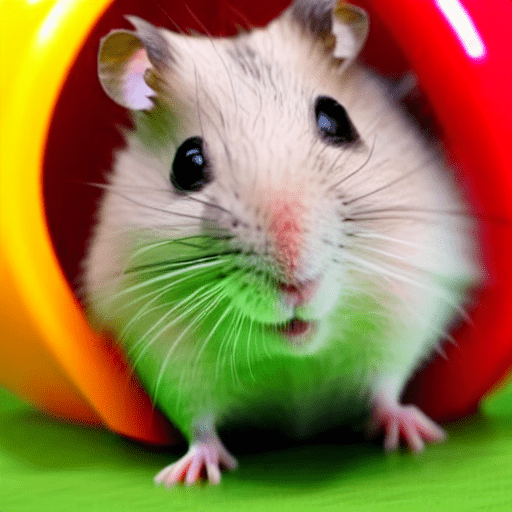How to Sex a Hamster: A Complete Guide for Accurate Gender Identification
To sex a hamster, gently lift its tail and examine the area near its anus; males will have a prominent reproductive organ visible. If you own a hamster, you may be curious about its gender.
Sexing a hamster is a simple process that involves observing its reproductive organs. Knowing the sex of your hamster is important for breeding, separating males and females to prevent unwanted litters, and understanding their specific care needs. While it may seem like a daunting task, sexing a hamster can be easily accomplished by gently lifting its tail and examining the area near its anus.
In males, a noticeable reproductive organ will be visible, whereas in females, a lack of such a protrusion will indicate their gender. By correctly sexing your hamster, you can ensure its health and well-being in your care.
Understanding Hamster Reproduction
It is important to correctly determine the sex of a hamster in order to prevent unwanted breeding and ensure their overall well-being. Male and female hamsters have distinct physical characteristics that can help identify their sex.
| Male Hamsters | Female Hamsters |
|---|---|
| Have a larger distance between their anus and genital opening | Have a shorter distance between their anus and genital opening |
| Have prominent testicles, which may be visible | Do not have visible testicles |
| May exhibit a scent gland near their belly button | Do not have a prominent scent gland |
Observing these physical characteristics can help differentiate between male and female hamsters. It is important to handle hamsters with care and seek professional advice if unsure about their sex.
Preparing For Sexing
When sexing a hamster, it is important to prepare beforehand. This includes gathering the necessary supplies, as well as creating a calm environment for the hamster. Having the right tools and ensuring a relaxed setting will make the process easier and less stressful for both you and the hamster.
The External Anatomy Of Male Hamsters
Sexing a hamster can be a crucial task for many hamster owners. To determine the sex of a male hamster, it is important to be aware of the external anatomy and recognize key physical characteristics. By doing so, you can confidently differentiate between male and female hamsters. One of the most reliable ways to identify a male hamster is by examining its genitalia. In males, the genital area is located just below the anus. The testicles can often be felt as small lumps or bumps on each side of the base of the tail. These testicles may become more prominent as the hamster matures. Additionally, male hamsters possess a longer distance between the anus and the genital opening compared to females. This gap is known as the “vent,” and it is usually more noticeable in males. By observing these physical characteristics, you can confidently determine the sex of your hamster.
| Identifying feature | Male | Female |
|---|---|---|
| Genital location | Below the anus | Above the anus |
| Testicle presence | Usually present | Absent |
| Vent length | Longer distance from anus | Shorter distance from anus |
By understanding the external anatomy and recognizing the key physical characteristics, you can successfully sex a male hamster and ensure proper care and handling.
The External Anatomy Of Female Hamsters
Identifying female genitalia is an important skill for hamster owners. By recognizing key physical characteristics of female hamsters, you can effectively sex them. Females have a pair of nipples located on their belly. These nipples appear as small, raised bumps on either side of the midline. Additionally, look for the presence of a vulva, which is a small slit located beneath the anus. The vulva is generally more prominent in adult females and becomes less visible in younger hamsters. It is important to handle your hamster gently while examining these features, as they can be delicate. Remember, accurate sexing is crucial to avoid any unwanted pregnancies and to ensure appropriate care for your pet hamster.
Proper Handling And Restraint Techniques
When handling a hamster for examination, it is essential to prioritize the safety and well-being of the animal. Safe restraint techniques are crucial to minimize stress and ensure a successful examination process, particularly when sexing a hamster. To properly restrain a hamster, it is important to approach the animal calmly and confidently, using gentle and controlled movements. One effective method is the cupping technique, where the hamster is carefully scooped up and cradled in the palm of your hand. This technique allows for a secure grip while minimizing the risk of injury. During the sexing process, it is important to keep the hamster relaxed and comfortable. Creating a quiet and calm environment reduces stress levels and enables a more accurate examination. Dividing the process into several short sessions rather than a prolonged period is advisable, as it gives the hamster time to recover and reduces potential distress. In conclusion, by using proper handling and restraint techniques, as well as minimizing stress during the sexing process, you can ensure the safety and well-being of the hamster while obtaining accurate examination results.
Step-by-step Sexing Procedure
Tips for accurately identifying the sex of a hamster include observing the distance between the anus and the genital opening. In male hamsters, the distance is usually greater, while in females it is shorter. Additionally, male hamsters have more noticeable testicles. Their genital area may also have a noticeable bulge. Another useful method is to look at the shape of the genitals. Males have a more elongated shape, while females have a more rounded shape. It is important to handle the hamster gently when attempting to determine its sex and to ensure that it is comfortable throughout the process. Overall, by carefully observing these characteristics and taking the necessary precautions, you can successfully sex a hamster.
Troubleshooting And Common Challenges
It can be challenging to handle a difficult or uncooperative hamster, but with patience and the right approach, it can be done successfully. One common mistake is trying to handle the hamster too soon or too forcefully. Gentleness is key when dealing with a resistant hamster. It’s important to approach the hamster slowly and calmly, using slow movements to avoid startling them. Providing a comfortable and secure environment for the hamster is also crucial. They should have a cozy nest, plenty of hiding spots, and familiar scents to feel at ease. Building trust takes time, so it’s important to be patient and consistent in your interactions with the hamster. Offering treats or rewards during handling sessions can help establish positive associations and encourage the hamster to feel more comfortable. Remember, each hamster is unique, and what works for one may not work for another. Observing their behavior and adjusting your handling technique accordingly can help ensure a successful and stress-free experience. It’s common to make mistakes when sexing a hamster, but these can be overcome with care and understanding. One mistake is relying solely on visual cues. While external differences can indicate the sex of some hamster species, they are not always reliable. Feeling for the presence of testicles can be a more accurate method for determining a male hamster. Another mistake is sexing hamsters too early. It’s important to wait until they are at least four weeks old before attempting to determine their sex, as their reproductive organs may not be fully developed. Additionally, mistaking a pregnant or lactating female for a male can lead to misidentification. Taking the time to educate yourself on the unique characteristics and behaviors of different hamster species can help minimize mistakes and ensure accurate sexing.
Continuing Care For Gender-specific Needs
The sex of a hamster plays a crucial role in tailoring its care. Addressing the specific health concerns and behavior differences between male and female hamsters can ensure their well-being and happiness.
| Male Hamsters | Female Hamsters |
|---|---|
| Testicular tumors | Ovarian and uterine tumors |
| Prostate issues | False pregnancies |
| Impacted scent glands | Mammary gland tumors |
- Males: More territorial, may display aggression, prone to scent-marking.
- Females: Generally more social, may exhibit nesting behaviors, prone to heat cycles.
Understanding these gender-specific needs is essential for providing appropriate care. Regularly checking for signs of health issues, such as swelling or lumps, and providing a suitable environment with ample hiding spots and social interactions are effective methods to maintain a happy and healthy hamster, regardless of their sex.
Frequently Asked Questions On How To Sex A Hamster
Do Female Hamster Have Balls?
No, female hamsters do not have balls. They have ovaries and reproductive organs different from males.
Are Female Hamsters Calmer Than Males?
Female hamsters are not necessarily calmer than males. Each hamster has its own personality, so the level of calmness can vary among individuals. It is important to consider the specific hamster’s behavior and temperament rather than assuming based on gender.
What Age Do Hamsters Mate?
Hamsters can start mating around 4 weeks old, but it is advised to wait until they are at least 10 weeks to prevent complications.
How Do Hamsters Like To Be Touched?
Hamsters prefer gentle touches on their back, sides, and head. Avoid sudden movements and be cautious while handling them.
Can the Potty Training Method Be Used to Sex a Hamster as Well?
Many pet owners wonder if the potty training method can be utilized to determine the sex of a hamster. By following the potty training hamsters: 5 simple steps, enthusiasts hope to identify their furry friend’s gender effortlessly. However, it’s important to note that potty training doesn’t assist in sexing hamsters, as determining their gender requires a different approach.
Conclusion
Understanding how to determine the sex of a hamster is crucial for responsible pet ownership. By carefully observing physical characteristics, such as the distance between the anus and genital opening, or the presence of testicles or nipples, individuals can accurately identify the sex of their furry friends.
Remember to handle your hamster with care and seek guidance from a veterinarian if unsure. Your hamster’s health and well-being depend on your knowledge and attention to detail. Happy hamster parenting!


One Comment